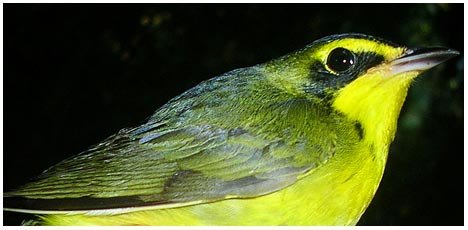Migratory birds learn
As with many tourists learning local words, migratory birds seem to learn and understand the common calls of unrelated birds they encounter on their journey.
Long-term birds settled in a location throughout the year are not difficult to identify predators such as hawks, weasels and snakes.
However, migratory birds often face the risk of encountering predators during the migration process, but they do not immediately identify the danger.
According to the author of Joe Nocera, Queen's research, 'When I first went to an old forest in Belize I was surprised by the diversity of snakes. I realized I could not spend the day avoiding every snake I saw. I have to learn from people here who are dangerous. '
'That makes me wonder how the migratory bird, like me, is blind, dealing with this. I suspect they must also learn from native species. '
Some previous ecologists have suggested that long-distance species learn from local species to get information about exotic predators , but the evidence for this hypothesis remains ambiguous.
To explore this possibility, researchers at Queen's University, Ontario, Canada, turned on pet-hunting calls for both native species and alien species for birds traveling through Belize during long migrations. as well as for native birds and monitoring their reactions.
The work appears in the July edition of Behavioral Ecology and Sociobiology.

Scientists are studying the ability of migratory birds to learn and understand the common calls of unrelated birds, such as the Kentucky warbler observed in photographs, living in North America and wintering in China. America.(Photo: Joe Nocera / Queen's University)
Published in July 2008, the study's findings suggest that migratory birds can extract detailed information from the anti-predator calls that other species have encountered during migration. moved on.
Dialect
Belize is full of tropical python predators to wild cats and hawks. It is part of the main migratory route of 83 birds flying from North America to the winter south. While some birds end their trip in Belize, others continue to move down to South Africa.
Nocera and his colleagues obtained calls against the enemy due to the crowd of gray-green tanager birds and the black chickadee birds then turned on the birds in the listening area.
Scientists hope the native bird will respond to the call of the tanager bird, as the tanager is everywhere in Belize. But they are not sure whether migratory birds understand the dialect of the local bird.
The team found that when native birds and migratory birds heard the cry of tanager, they reacted with anxious, anxious attitudes through continuous sounding and changing positions.
Remarkably, they found migratory birds also reacting to the chickadee's cry against enemies, even when the chickadee was not seen anywhere near Belize. Native birds do not react to the cry of chickadee at all.
'The migratory bird responding to the call of a species they cannot hear within 2,000 km from the place is a big surprise.'
Memories
Lauren Benedict, an ornithologist at the University of California, Berkeley, who did not participate in the work, said: 'It is amazing that even far away from a continent the birds still remember and react to the danger signal. . This proves the bird's impressive ability to recognize and memorize audio signals . '
Laszlo Garamszegi, an ecologist at the University of Antwerp, Belgium, did not participate in the work, 'These findings are somewhat similar to what we found about imitating sound. We found that long-distance migratory birds learned more sound than native birds. '
- Migratory birds are not picky to stop
- World's first airport for birds in China
- Video: Professional guide for migratory birds to avoid hunters
- 'Strange bird' in Lai Chau is a stork
- Birds fall mass in America
- How do we monitor the migration of birds in the world?
- There are many strange birds near the Lai Chau Hydropower Project
- Unbelievable records of birds
- Study birds to discover how children learn to speak
- Migratory birds sleep hundreds of times a day
- The flock of birds appears in Lao Cai as a swallow
- Sky bird - unpredictable danger for aviation
 Animal 'suffering' after hibernation
Animal 'suffering' after hibernation Why do goats climb well?
Why do goats climb well? Scientists were surprised to see chimpanzees eating turtles
Scientists were surprised to see chimpanzees eating turtles Giant catfish died deadly due to drought in Thailand
Giant catfish died deadly due to drought in Thailand